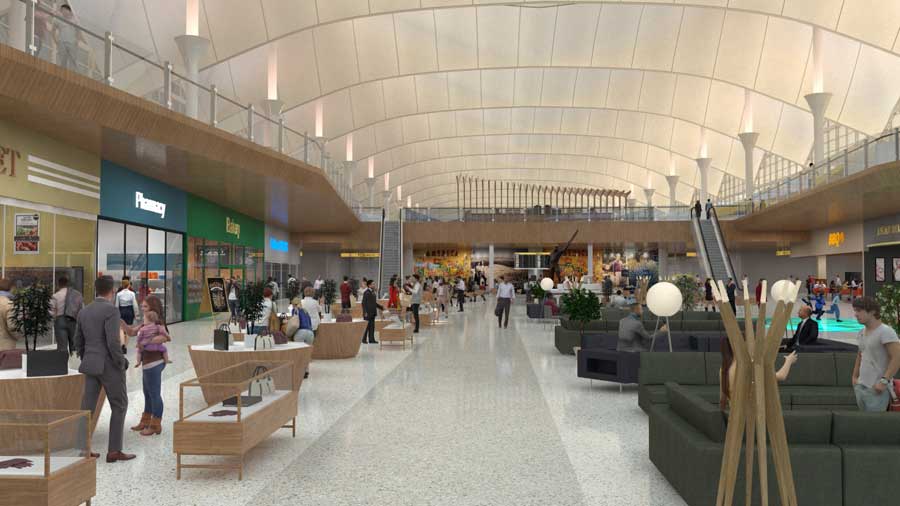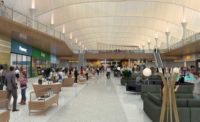Despite vigorous opposition from several airlines, Denver officials say they do not anticipate a delay in city council review and approval of a $1.8-billion maximum-value contract to upgrade the main airport terminal. That contract is scheduled for the council's final approval on Aug. 7.
The CEOs of nine major airlines that operate out of Denver International Airport (DIA) sent a letter to airport CEO Kim Day in June to protest the scope and cost of the proposed renovations. "Despite our best efforts working with the airport, we find ourselves with significant concerns on both the financial and operational fronts," the letter said. It was signed by representatives of Frontier, Southwest, United, Delta, American and four other carriers, including United Parcel Service.
The airlines had requested a four-month delay in the council's review of the 15,000-page contract. City council members did not receive copies of the full contract until their July 17 meeting, although "we've done numerous briefings with them beforehand," says Aaron Barraza, manager of government affairs at DIA.
The airport has been negotiating the contract with Ferrovial Airports, the Madrid-based leader of Great Hall Partners (GHP), a public-private partnership, for more than 10 months. Airport officials say that a delay could push final approval beyond the Sept. 1 expiration of a predevelopment contract with the GHP-Ferrovial team. That would cost the airport and the city at least $9 million in penalties, and perhaps more.
"That's because there's no provision to recoup costs already spent on design beyond that amount," says DIA spokesperson Stacey Stegman. DIA estimates that design costs are running nearly $1.5 million per month, she says, and the airport has already made some design changes requested by the airlines. Overall design is only about 30% complete, "which allows for some flexibility as things progress," she adds.
The P3 contract, which includes construction costs somewhere between $650 million to $775 million, will extend for 34 years, including four years of construction and 30 years of operations, Stegman says.
Improved Security and Services
The terminal project aims to boost DIA's security screening capacity by at least 50% and relocate TSA positions to the north end of the terminal. Ticket counters will be consolidated, eliminating dozens of positions left empty by airline consolidations and online-ticketing technology. More food and retail concessions will be added within the 1.5-million-sq-ft terminal.
GHP, led by Saunders Construction as the contractor, will build and pay for all of the improvements but manage only the terminal's concessions after completion. Revenues from concessions will be split, with 20% going to GHP and 80% to DIA, airport officials said.
The airlines lease 60% of space in the terminal, so they would pick up nearly 60% of the project's costs, Stegman says. The upgrades would be funded largely by an increase in passenger fees levied on the airlines, based on the average cost per enplaned passenger (CPE). That fee will increase from the current $12 to $13.81 "when all projects come online in 2022," said George Merritt, senior vice president of government and community affairs at DIA, in a July letter to the city council.
Even with the increase in CPE costs, DIA "will still have one of the lowest costs per enplaned passenger of major U.S. airports," CEO Day said in a letter to the airlines.
"But at no time did we assert … that this project would pay for itself," Merritt said.
Airport officials emphasize the impetus for the project rises not from a need for increased revenue from concessions and vendors, but "to address our current vulnerabilities created by the exposed TSA checkpoints," Day said. The security areas are located on the main floor of the terminal, with unsecured second-level balcony space extending along the perimeter above them.
Security capacity will be expanded by more than 50% after the project is complete, Stegman says.
The project also will allow the airport to handle more than 80 million passengers per year. When it opened 22 years ago, DIA was designed to handle 50 million passengers per year. In 2016, DIA traffic topped 58.3 million people, according to airport records.
"The project has always been about increased security and capacity," Stegman says. "There's nothing we're going to do that will make security and access worse."






Post a comment to this article
Report Abusive Comment